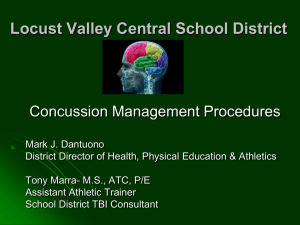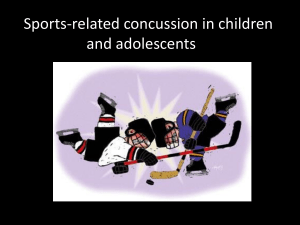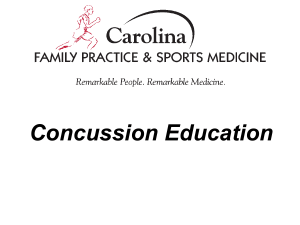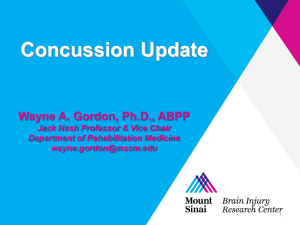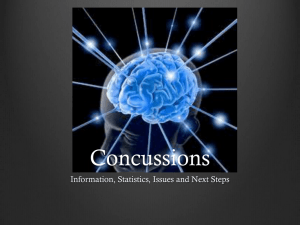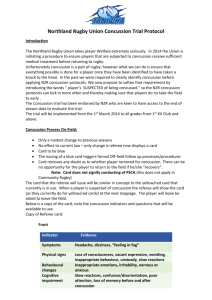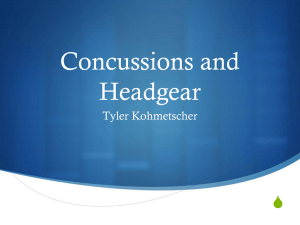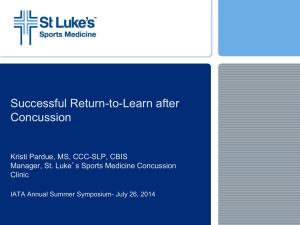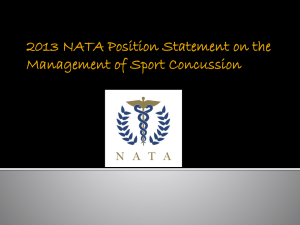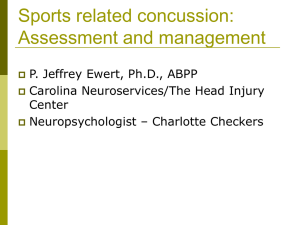Rory-Lamont-Concussion
advertisement
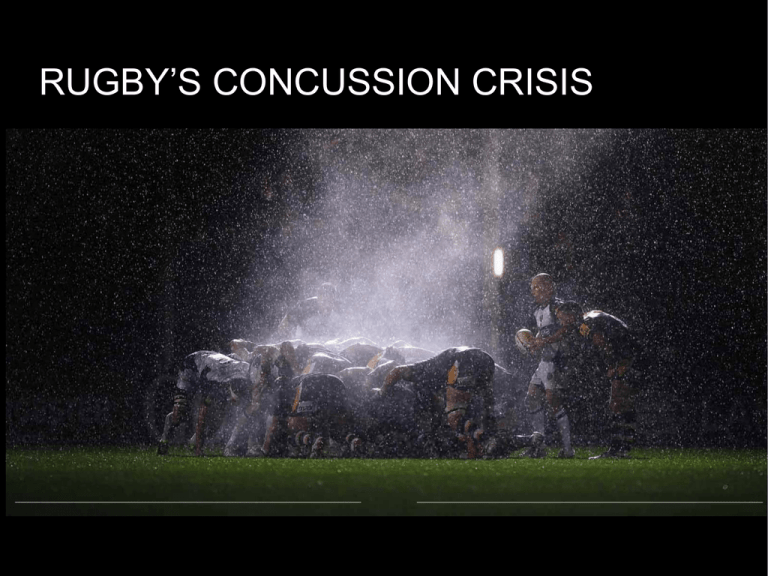
RUGBY’S CONCUSSION CRISIS My Personal Experience WHAT IS THE CRISIS? RFU INJURY AUDIT REPORT 2014 CONSEQUENCE OF PROFESSIONALISM OUTDATED UNDERSTANDING CONCUSSION IS BRAIN DAMAGE Mild traumatic brain Injury • Brain cell Death. • Brain proteins found in blood stream. • Linked to a degenerative disease called Chronic Traumatic Encephalopathy (CTE). Formally known as Dementia Pugilistica. PUNCH DRUNK SYNDROME 20% of boxers develop CTE FORMER NFL PLAYERS HAVE A DEMENTIA RATE 19 TIMES HIGHER THAN THE NORMAL POPULATION SMOKERS HAVE A LUNG CANCER RATE 5-10 TIMES HIGHER THAN NONSMOKERS Concealing the known dangers Should rugby be concerned with CTE? Rugby is not NFLIRB THE BRAIN CANNOT TELL WHICH SPORT CAUSED THE CONCUSSION RUGBY VS NFL RFU injury audit report - 6.7 concussions per 1000 hrs of play. As high, if not higher, than in similar NFL studies Very few studies into rugby’s link to dementia. LESS THAN 20% OF CONCUSSIONS ARE MEDICALLY IDENTIFIED • Players still don't know what a concussion is. • Players will deliberately hide their concussion. • They are not educated about long term health risks. • They don’t know what they are risking. Blue = 10-30g, orange = 40-60g and red = 70g+. Courtesy Doug King SUBCONCUSSIVE BLOWS SPONGE INSIDE A BONE BUCKET ALL CONCUSSION ASSESSMENTS ARE FLAWED Concussed players are passing the assessments and returning to the field of play with brain damage. Too much faith is put into the reliability of the concussion assessments. Exposing players to enormous health risks. THE PITCH SIDE CONCUSSION ASSESSMENT (PSCA) • 5 minute assessment by pitch side medics during a match. • Concussion symptoms often takes 10 minutes or longer to display. • Concussed players can pass the assessment and return to the field of play with brain damage. • Giving concussed players a license to play. CONCUSSION GOLD STANDARD 2012 • If a player is suspected of having concussion he should be immediately removed from the field of play and observed for 24 hrs IRB medical experiment? GRADUATED RETURN TO PLAY PROTOCOL. • Concussion assessments performed in the days and weeks after a concussion. • Assessments can be cheated by players. • Concussed players can pass the assessments. • A concussed player can return to play 6 days after being knocked out. Has the player healed? How can we continue to allow brain damaged rugby players to return to the field of play? IMPLICATIONS • Impaired brain function -poor performance on the pitch. • Increased concussion risk. • Increased risk of secondary injury. • Second impact syndrome (death). • Post-concussion Syndrome. • Chronic Traumatic Ecelophalopathy CHANGE THE CULTURE THROUGH INFORMED CONSENT EDUCATION Concealing the known dangers. Sound familiar? IF A PROFESSIONAL PLAYER IS EDUCATED ABOUT ALL THE POSSIBLE HEALTH RISKS AND CHOOSES TO HIDE A CONCUSSION, THAT IS THEIR CHOICE AS A CONSENTING ADULT. PROTECT THE GAME BY PROTECTING THE PLAYERS PROGRESS • Player Education- informed consent for all players. • Coach education. • Change the bravado culture. • Return to minimum 3 week exclusion after concussion until more reliable assessments are available- blood tests? • Use video technology to help pitch side medics identify concussed players. • Minimise brain trauma in training. Bashing brains in training does not help match day performance.
